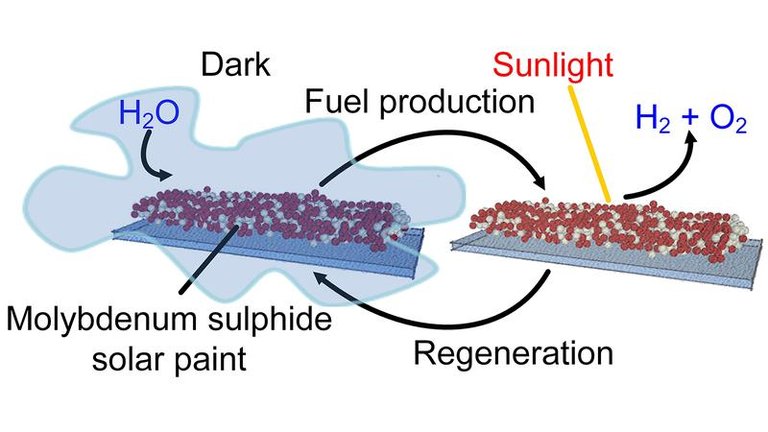Hi all steemers .. let me ask you question ... How do you power your home? Most of us have wires running from a power station somewhere. Some have solar panels. Maybe some of you have a windmill or a really muscular hamster that spins a wheel attached to a generator (lol).But in the future, unlimited power may be as simple as applying a fresh coat of paint to your house. It may sound like a fantasy, but a team of Scientists at RMIT University in Melbourne, Australia, are well on their way to making it a reality.
Tomorrow's energy resources
In today's quest for clean renewable energy, every material is being considered in hopes they can be reimagined as tomorrow's energy resources. Paint has been problematic in the past. It has been associated with waste in non-toxic forms. In the toxic variety, it has even triggered public health crises.
A team of researchers from the Royal Melbourne Institute of Technology (RMIT) has developed a paint that can be used to generate clean energy. The paint combines the titanium oxide already used in many wall paints with a new compound: synthetic molybdenum-sulphide. The latter acts a lot like the silica gel packaged with many consumer products to keep them free from damage by absorbing moisture.
According to a report on RMIT’s website, the material absorbs solar energy as well as moisture from the surrounding air. It can then split the water into hydrogen and oxygen, collecting the hydrogen for use in fuel cells or to power a vehicle. “[T]he simple addition of the new material can convert a brick wall into energy harvesting and fuel production real estate,” explained lead researcher Dr. Torben Daeneke.
energy.
the future of enrgy
Dr. Daeneke has high hopes for the new paint, and rightfully so, since it could convert the average brick wall into an energy harvester. The paint could be used in a variety of environments. In hot, dry climates, it could absorb nearby sea or ocean vapor to convert into fuel. It could even work its magic when applied to areas that without enough sunlight to power solar cells alone. The energy produced will be equally versatile, and would be ready for direct use in a fuel cell or combustion engine.
Though the paint isn’t expected to be commercially viable within the next five years, Daeneke told Inverse he believes the end product will be cheap to produce. He also claims the paint would be effective in a variety of climates, from damp environments to hot and dry ones near large bodies of water: “Any place that has water vapor in the air, even remote areas far from water, can produce fuel.”
When this new material finally makes its way to consumers, it’ll join the ever-growing list of innovative technologies that are moving humanity away from fossil fuels and toward a future of clean, renewable sources of energy.
references
[ RMIT’s website] (https://www.rmit.edu.au/news/all-news/2017/jun/solar-paint-offers-endless-energy-from-water-vapour
Curiosity blog
Thank you for reading , hope you enjoyed
Upvote and follow me @ahmed-elsheref
@ahmed-elsheref
Good content
Keep sharing good posts!